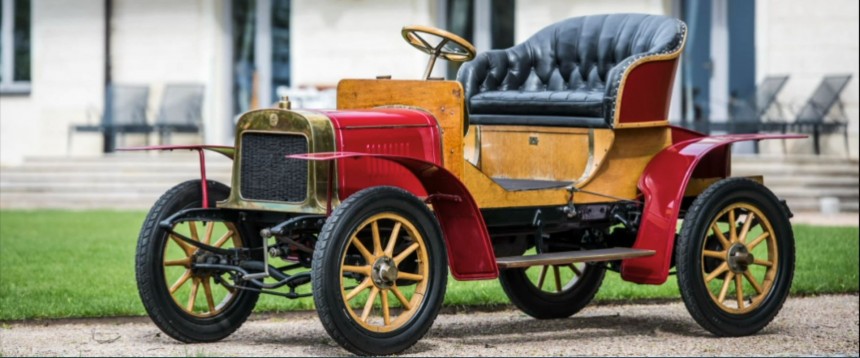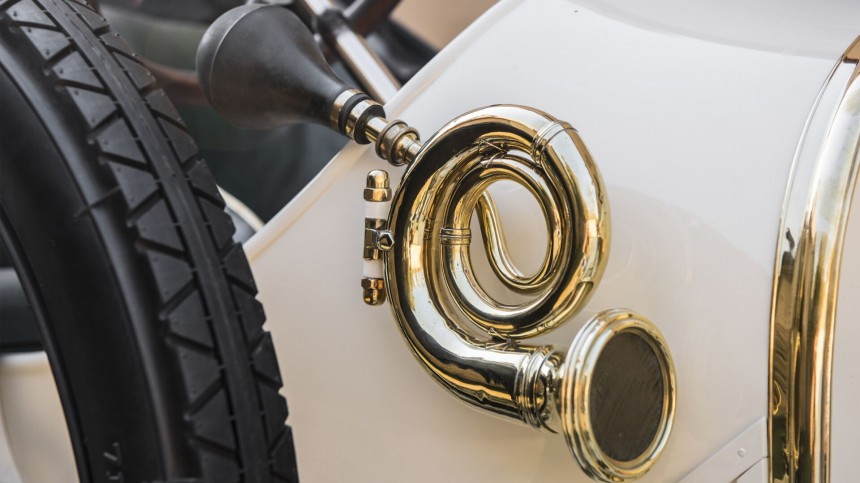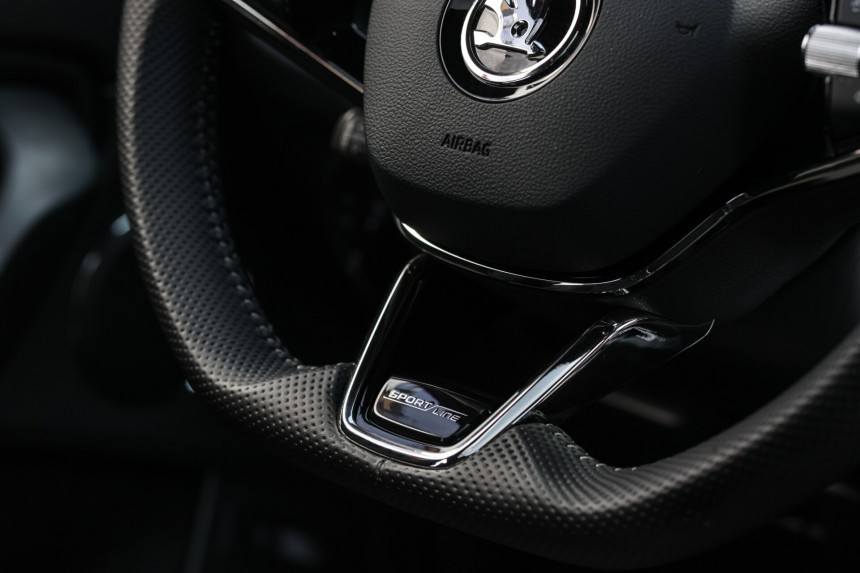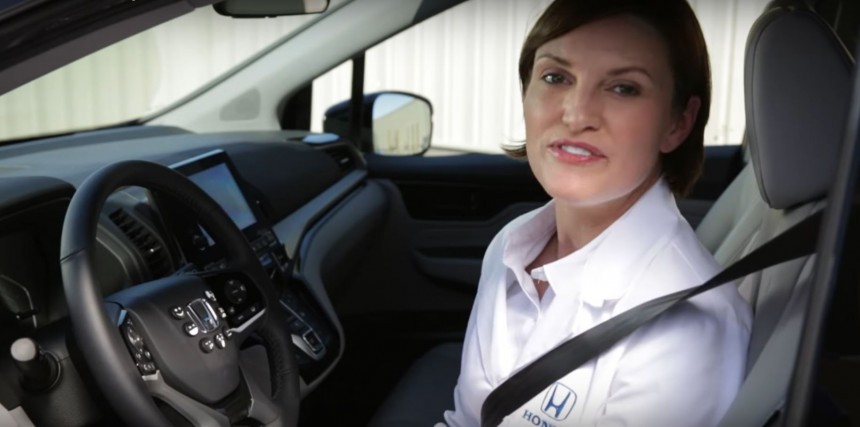Ah, the horn! An invention that helped millions of people! It granted them a way to express their dissatisfaction about certain traffic scenarios by simply pressing a button at the end of a stalk or smacking the steering wheel's middle part. But did you know that some countries get cars equipped with superior horns? Those customers can truly count on them to work. Some may keep such particularities a secret, but Skoda doesn't.
That allows us to understand more about people and cultures. It also shows how carmakers try to blend in and satisfy the needs of their markets.
But first, we must go back in time and rediscover the horn's interesting history because, as it always was with cars, the fascination rarely ends.
In the early years of the 20th century, the horn was treated as an optional extra. For example, in 1906, Laurin & Klement sold their first motor car, the Voiturette A, without one. Laurin & Klement is considered Skoda's predecessor because the two founders, Vaclav Laurin and Vaclav Klement, agreed to a merger with Skoda Engineering in 1925.
Nowadays, Laurin & Klement is a trim line for various Skoda units that includes almost anything the VW-owned automaker can offer.
However, that optional extra wasn't similar to the horn we know today. It looked more like a bugle, a brass instrument commonly used in some branches of the Army. Think of it like a very simple trumpet with no valves that can change the notes.
Cheaper models came with a sound signal device that had a straight tube, while pricier cars included a horn that looked like it came straight from a classical music orchestra. But the great equalizer was that customers of both automobiles had to squeeze a rubber bulb to make themselves noticed on the road.
So, in 1908, the bulb horn's successor came out of Newark, New Jersey. Thomas Edison's chief engineer, Miller Rees Hutchinson, used the electromagnet to vibrate a diaphragm. The practical electromechanical horn was, thus, invented.
That was one significant step forward because other companies played with different implementations. For example, some larger vehicles had sound signal devices that used exhaust gases to make louder noises.
However, the Americans cannot be credited with turning early automakers and people away from the rubber bulb horn. That's the merit of Klaxon Signals from Oldham, UK. They didn't invent the electromechanical horn, but the British had such a large presence worldwide that it made it easier to spread the upgrade to almost everyone, everywhere. "Klaxon" is also another term for "horn." It's still widely used in some countries today.
But it wasn't until 1914 that we had a standardized horn design. Germany's Bosch patented it as the world was in the midst of a devastating global war. However, not even that solution was good enough at first. The horn needed to be louder. That's why Bosch added a second diaphragm that allowed the tones to be amplified.
But Hutchinson's initial solution continued to live on. Even today, most cars have two horns with different tones. We were recently reminded of this when Rivian silently dropped one as a cost-cutting measure. Some owners disliked it so much that they turned to aftermarket solutions.
Most of today's 12V or 24V electromechanical horns use an electromagnetic converter and a coil. A magnetic field is created when the assembly is activated. It carries the sound to a metal membrane. When the armature strikes the electromagnet's core, the sounding board vibrates the diaphragm, and that's how a sound is made.
Our cars' horns are typically set to emit 400 – 500 Hz sounds. A fully functioning human ear can notice sounds as low as 20 Hz and as high as 20,000 Hz. Keep in mind that frequency doesn't cause harm to your ears. Loudness and duration are what get your hearing.
Back when Skoda was only a hopeful European manufacturer headquartered in the Czech Republic, it used to put its vehicles' car horns through around 50,000 tests. Before we entered the third millennium, the brand upped the repeated test blasts to 100,000.
Nowadays, the all-electric Enyaq iV's horn must handle over 150,000 repeat activations without showing any signs of weakness.
But even more interesting is that Indian-made or imported Skodas have their horns put through half a million test blasts. It's a necessary step, even though it sounds unreasonably demanding when you first hear about it.
Indian drivers love using their cars' horns. It's almost a national sport everyone partakes in. Skoda's Lukas Backovsky said a study found that drivers constantly make themselves noticed at major intersections. A horn is heard every three seconds in India's urban areas.
Tourists are mostly caught off-guard by this. Few expect to see so many cars on the road blasting their horns almost constantly. Popular platforms like Reddit or Quora are flooded with questions surrounding India's love for blowing horns.
It may seem like a cultural thing that people got used to, but it's worth noting that a decibel detox would benefit everyone. This addiction to honking is not exclusive to India, even though people there tend to use this car part more often than others.
If you're lucky enough not to experience hypertension, then stress might put your body in overdrive. That can lead to a plethora of unwanted issues.
If we're honest with ourselves for a second, driving in everyday traffic can be stressful. You must pay attention to other cars, know your route, control the vehicle, and ensure you stick to the rules of the road.
Besides that, drivers are responsible for keeping their vehicles in good condition, which might become another burden. Now add dealing with people who can't take their hand off the horn, and you can imagine how driving can quickly become stressful. Commuting is nothing like enjoying a backroad.
Noise is nothing to be trifled with. The problem is that most of us are rarely aware of its damaging effects. Some may realize it only when they upgrade. For example, some car owners appreciate a non-run-flat or higher-quality tire. Premium rubber rings can help a car become more silent.
That phenomenon is also something first-time EV owners experience. Once you remove the internal combustion engine and its controlled explosions from the equation, the car can become a sanctuary because motors make minimum noise.
Luxury automakers also showed us that noise is an issue. Nowadays, pricey cars have sound systems that can match certain waves and stop them from reaching your ear drum. General Motors recently developed a noise-canceling system that counteracts unwanted air vibrations to enhance the cabin's luxurious feel.
At the end of the day, people won't stop honking. But what you can do is make sure your next car will have better sound deadening and double-pane windows. That way, you'll avoid unnecessary noise, enjoy a more comfortable commuting experience, and better protect your health.
But first, we must go back in time and rediscover the horn's interesting history because, as it always was with cars, the fascination rarely ends.
In the early years of the 20th century, the horn was treated as an optional extra. For example, in 1906, Laurin & Klement sold their first motor car, the Voiturette A, without one. Laurin & Klement is considered Skoda's predecessor because the two founders, Vaclav Laurin and Vaclav Klement, agreed to a merger with Skoda Engineering in 1925.
Nowadays, Laurin & Klement is a trim line for various Skoda units that includes almost anything the VW-owned automaker can offer.
However, that optional extra wasn't similar to the horn we know today. It looked more like a bugle, a brass instrument commonly used in some branches of the Army. Think of it like a very simple trumpet with no valves that can change the notes.
An international effort
But investors, engineers, and leaders of the automotive industry understood this sector of the economy was about to generate a ton of revenue, and they knew there was room for constant improvement.So, in 1908, the bulb horn's successor came out of Newark, New Jersey. Thomas Edison's chief engineer, Miller Rees Hutchinson, used the electromagnet to vibrate a diaphragm. The practical electromechanical horn was, thus, invented.
That was one significant step forward because other companies played with different implementations. For example, some larger vehicles had sound signal devices that used exhaust gases to make louder noises.
However, the Americans cannot be credited with turning early automakers and people away from the rubber bulb horn. That's the merit of Klaxon Signals from Oldham, UK. They didn't invent the electromechanical horn, but the British had such a large presence worldwide that it made it easier to spread the upgrade to almost everyone, everywhere. "Klaxon" is also another term for "horn." It's still widely used in some countries today.
Hindered progress
Unfortunately, World War I put a pause on civilian-oriented progress. For many years after WWI ended, car buyers had to use a rubber bulb horn in tandem with the early electromechanical one. The latter just wasn't as reliable as the former. But, as expected, people didn't use them according to regulations. That led to noisier streets and angrier drivers.But Hutchinson's initial solution continued to live on. Even today, most cars have two horns with different tones. We were recently reminded of this when Rivian silently dropped one as a cost-cutting measure. Some owners disliked it so much that they turned to aftermarket solutions.
Most of today's 12V or 24V electromechanical horns use an electromagnetic converter and a coil. A magnetic field is created when the assembly is activated. It carries the sound to a metal membrane. When the armature strikes the electromagnet's core, the sounding board vibrates the diaphragm, and that's how a sound is made.
Skoda treats the horn very seriously
VW treats Skoda as a manufacturer of premium vehicles that try their best to break out of their category and enter the luxury segment as affordable offerings. India is an excellent example in this respect. Skoda is perceived as being better than VW. As a result of that positioning, it's cheaper to maintain or fix the latter. VW also has more service centers in the world's most populous country.Back when Skoda was only a hopeful European manufacturer headquartered in the Czech Republic, it used to put its vehicles' car horns through around 50,000 tests. Before we entered the third millennium, the brand upped the repeated test blasts to 100,000.
Nowadays, the all-electric Enyaq iV's horn must handle over 150,000 repeat activations without showing any signs of weakness.
But even more interesting is that Indian-made or imported Skodas have their horns put through half a million test blasts. It's a necessary step, even though it sounds unreasonably demanding when you first hear about it.
Tourists are mostly caught off-guard by this. Few expect to see so many cars on the road blasting their horns almost constantly. Popular platforms like Reddit or Quora are flooded with questions surrounding India's love for blowing horns.
It may seem like a cultural thing that people got used to, but it's worth noting that a decibel detox would benefit everyone. This addiction to honking is not exclusive to India, even though people there tend to use this car part more often than others.
A global issue we tend to overlook
And it is a problem. Noises over the 70 dB mark for longer periods may damage your hearing. Noise-induced hearing loss is a real thing! Even worse, if you tend to expose yourself to loud environments on a regular basis, you can develop high blood pressure. That means your heart works overtime and can "wear out" faster.If you're lucky enough not to experience hypertension, then stress might put your body in overdrive. That can lead to a plethora of unwanted issues.
If we're honest with ourselves for a second, driving in everyday traffic can be stressful. You must pay attention to other cars, know your route, control the vehicle, and ensure you stick to the rules of the road.
Noise is nothing to be trifled with. The problem is that most of us are rarely aware of its damaging effects. Some may realize it only when they upgrade. For example, some car owners appreciate a non-run-flat or higher-quality tire. Premium rubber rings can help a car become more silent.
That phenomenon is also something first-time EV owners experience. Once you remove the internal combustion engine and its controlled explosions from the equation, the car can become a sanctuary because motors make minimum noise.
Luxury automakers also showed us that noise is an issue. Nowadays, pricey cars have sound systems that can match certain waves and stop them from reaching your ear drum. General Motors recently developed a noise-canceling system that counteracts unwanted air vibrations to enhance the cabin's luxurious feel.
At the end of the day, people won't stop honking. But what you can do is make sure your next car will have better sound deadening and double-pane windows. That way, you'll avoid unnecessary noise, enjoy a more comfortable commuting experience, and better protect your health.

















